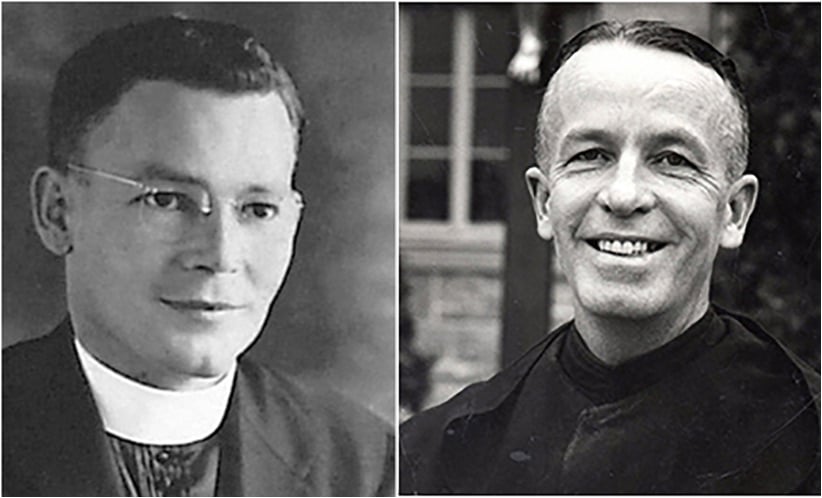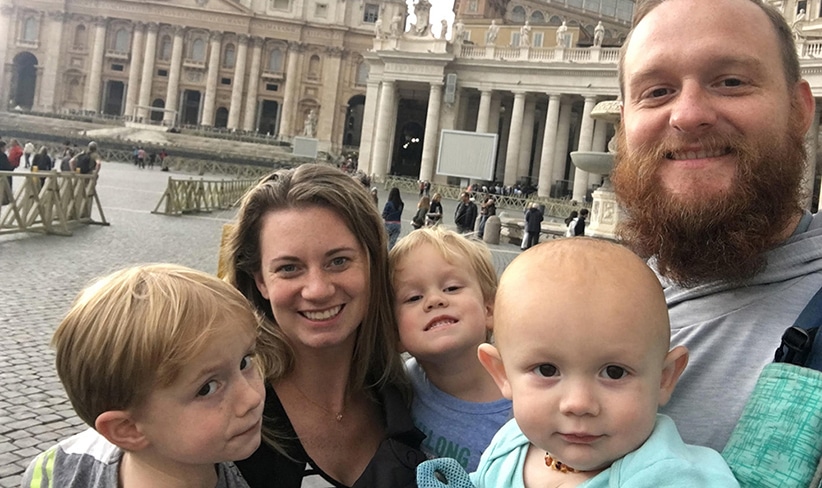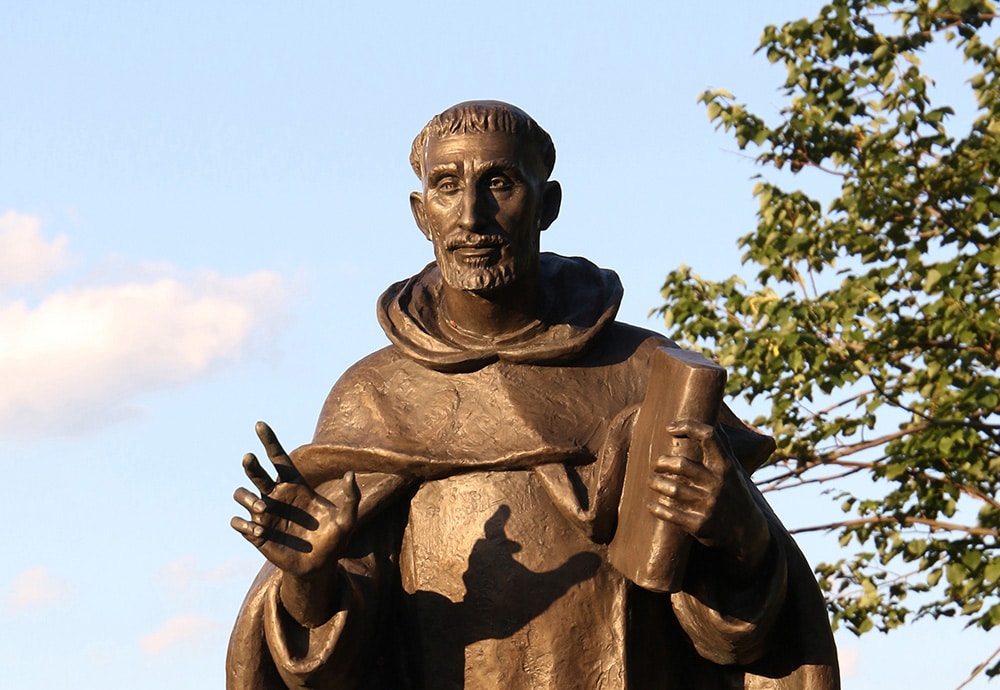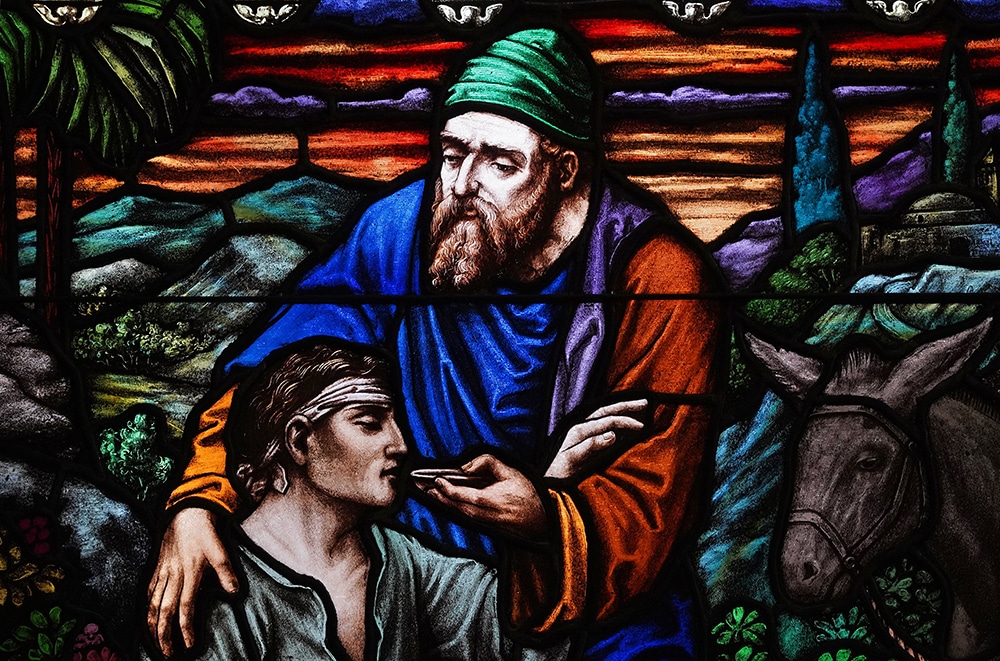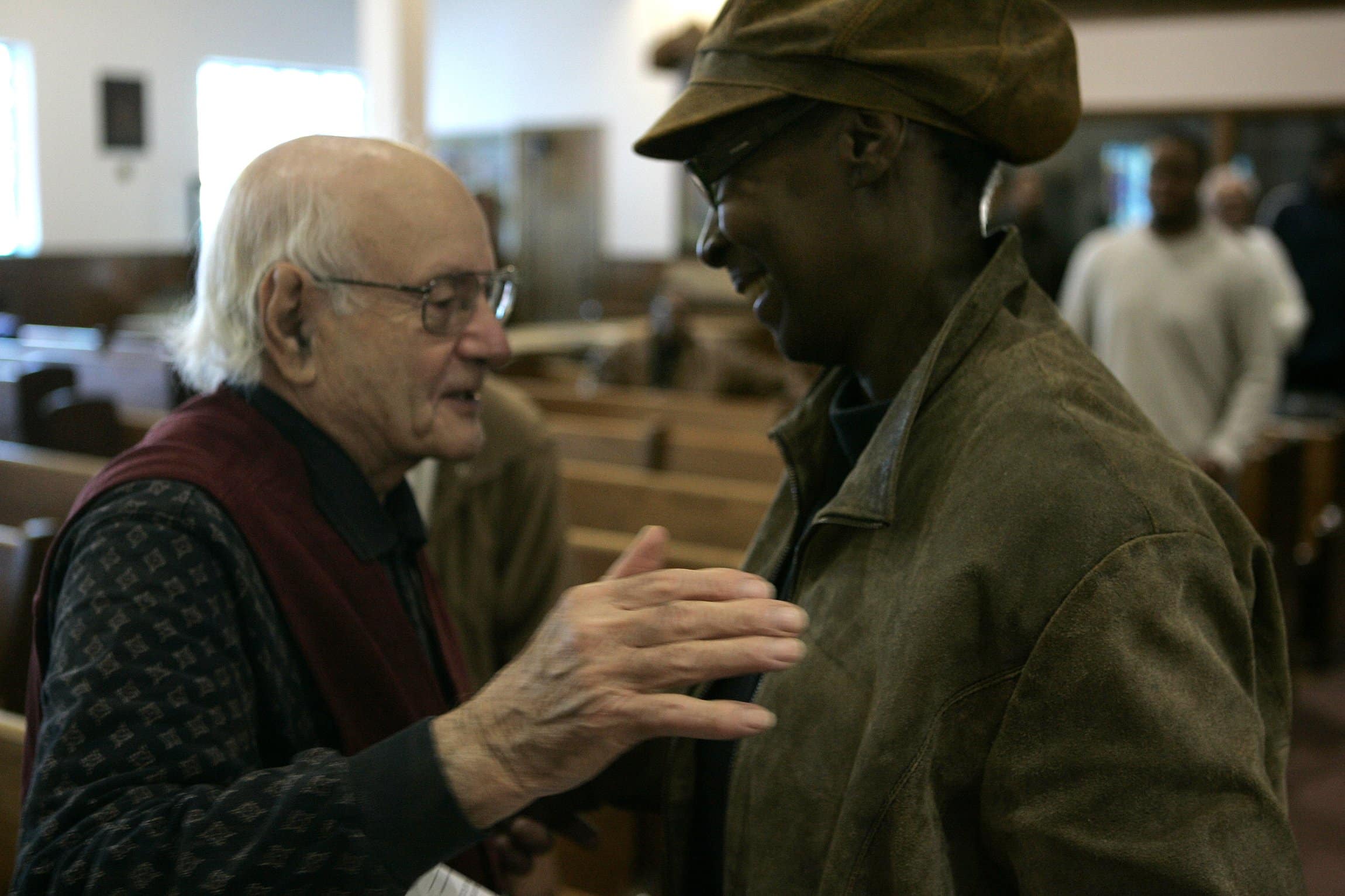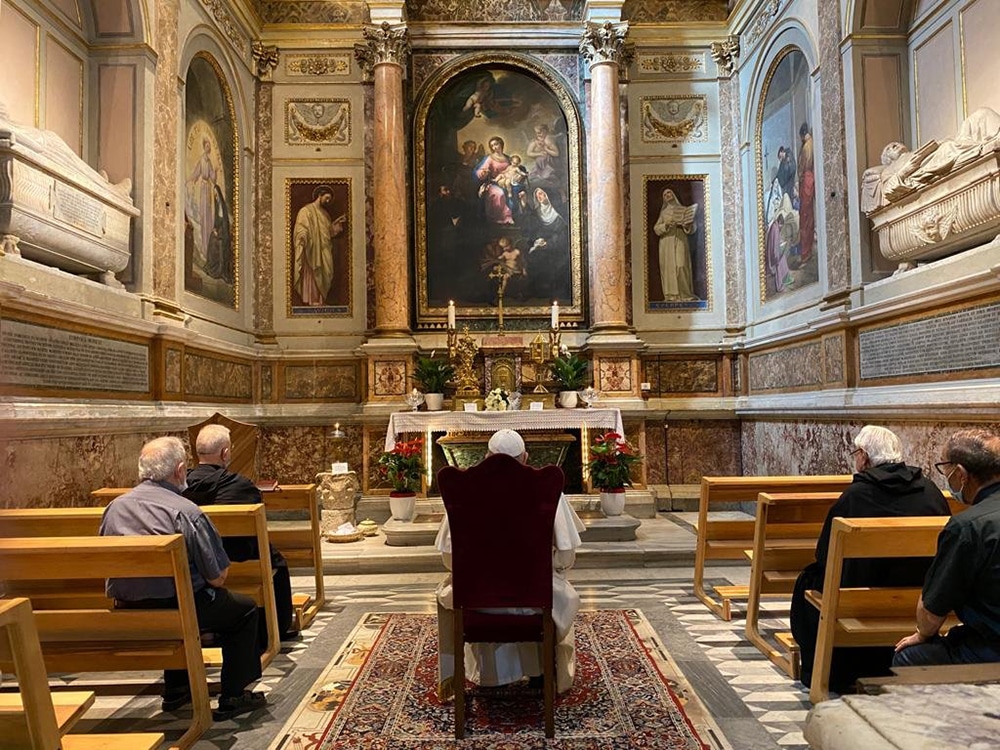The nation’s Catholic bishops offered a vote of support for the canonization causes of two 20th-century men who displayed valor and courage in wartime.
The near-unanimous votes in support of the causes of Father Joseph Verbis Lafleur, a priest of the Diocese of Lafayette, Louisiana, and Benedictine Brother Marinus, who was known as Capt. Leonard LaRue before religious life, will enable diocesan officials in Louisiana and New Jersey to begin investigating the writings and lives of both men, including interviewing witnesses who knew them.
“This is very much needed in this day and age, as every saint’s cause brings some joy and enthusiasm to the life of the Church,” said Father Pawel Tomczyk, a priest of the Diocese of Paterson, New Jersey.
Father Tomczyk, who serves as the postulator for Brother Marinus’ cause, told Our Sunday Visitor that it was “very exciting” for him to see the bishops express their support during the U.S. Conference of Catholic Bishops’ general assembly, which was held June 16-18.
As for what a timetable could be to get both men raised to the altars, there are several variables, not to mention miracles. Many causes for canonization have taken decades, if not longer, to reach their end.
“Pray for us,” Father Tomczyk said.
Father Joseph Verbis Lafleur
Carol Lafleur said she never thought the cause to canonize her husband Richard’s uncle would be introduced in her life, much less advance to an official diocesan fact-finding stage.
“I was hoping it would have happened in my children’s lifetime. I feel so blessed to be able to witness it. I’m still trying to believe that less than a year later, they’re voting on promoting the cause,” Lafleur told Our Sunday Visitor.
On Sept. 5, 2020, the Diocese of Lafayette, led by Bishop J. Douglas Deshotel, opened Father Lafleur’s cause for beatification and canonization. During the general assembly, Bishop Deshotel, in a pre-recorded video, said his local Church is “pleased to have had a priest who so completely exuded the virtues of charity and lived as an example of Christ.”
Ordained in 1938, Father Lafleur joined the Army Air Corps in 1941, a few months before the United States entered World War II.
“He really wanted to go and be with the men because his concern was, ‘Would they have a priest with them on the field?’ He wanted to be among the men to provide them the sacraments of the Church,” said Father Mark Ledoux, a priest of the Diocese of Lafayette who serves as the episcopal delegate for Father Lafleur’s cause.
In July 1941, Father Lafleur was assigned to the 19th Bombardment Group at Albuquerque, New Mexico. Four months later, the unit deployed to Clark Field, about 60 miles from Manila in the Philippine Islands. On Dec. 8, 1941, one day after the Japanese attack on Pearl Harbor, Japanese forces attacked the Philippines. Father Lafleur assisted the wounded and dying, actions that posthumously earned him the United States Army’s Distinguished Service Cross, the Purple Heart, and the Bronze Star.
Father Lafleur was among the servicemen taken captive. In POW camps, Father Lafleur gave his own food and medicine to prisoners. He sought out grueling work details to provide a priestly presence for other prisoners of war.
“He was truly convicted of the power of the sacraments of Christ’s presence, in and through the sacramental life of the Church,” Father Ledoux said. “So to be with the men, whether it was in training, and specifically we see it on the battlefield and in the prison camps, in him ministering to the sick and dying, celebrating the Eucharist, in whatever limited capacity he had, was of paramount importance to him.”
In September 1944, with American forces closing in on the Philippines, the Japanese loaded Father Lafleur and hundreds of other American POWs onto a ship bound for Japan. A U.S. submarine torpedoed the ship, not realizing it was carrying American POWs.
Survivors said Father Lafleur was last seen aiding prisoners to escape the sinking and burning ship, despite being fired upon by Japanese guards. He was just 32 when he died.
“His total gift of self for the work of sanctification and bringing Christ to them was what I think is most admirable about him. It’s what Christ calls each of us to,” said Father Ledoux, who was a seminarian when he first learned about Father Lafleur.
“He’s certainly a continual witness to me, a reminder of who I must be as a priest,” Father Ledoux said. “It’s a huge role to fill. I think his example is profound, and that’s why we’re lifting him up, not just for the local Church here but the universal Church.”
Carol Lafleur says she still receives calls from people seeking favors through Father Lafleur’s intercession. She told Our Sunday Visitor that about 20 years ago, relatives found several letters that he had written to his mother in basic training and later in the Philippines. The family also found letters that men who served with Father Lafleur wrote to his mother to tell her about “all the great things he did.”
“I tell everybody,” she said. “I have done this selfishly because I want my children and their spouses and my grandchildren and the children that go beyond them to know Father Lafleur, and to know what he did for his God and for his country.”
Brother Marinus
As a Benedectine monk, Brother Marinus never once in 50 years spoke about his exploits during the Korean War that saved 14,000 Korean refugees.
“He never talked about what he did. Anybody who lived with him will tell you that. And he didn’t want to talk about it,” said Benedictine Father Joel Macul, who lived with Brother Marinus at St. Paul’s Benedictine Abbey in Newton, New Jersey.
“If you asked him about it, he would simply say, ‘Well, you weren’t there so you wouldn’t understand.’ That was the end of the conversation. But that’s not unusual for anybody who has had any experience or trauma of war. People don’t talk about it, except to other guys who were there,” Father Macul told Our Sunday Visitor.
In December 1950, Brother Marinus was Capt. Leonard LaRue, the skipper of the 455-foot Meredith Victory, a freighter carrying military supplies to American servicemen in northeast Korea.
Three days before Christmas, Capt. LaRue, a Philadelphia native, came upon what he later likened to a scene out of Dante’s Inferno at the North Korean port city of Hungnam. There he saw thousands of Korean refugees retreating from a Chinese Communist onslaught at the Chosin Reservoir.
Though the SS Meredith Victory was designed to only carry a few dozen people, Capt. Larue managed to take 14,000 refugees aboard the freighter, which he then maneuvered through freezing, mine-infested waters to Geoje Island, 450 miles away, where they disembarked on Christmas Day.
“I think often on that voyage,” Brother Marinus would later say. “I think how such a small vessel was able to hold so many persons and surmount endless perils without harm to a soul.”
Capt. LaRue entered St. Paul’s Benedictine Abbey in New Jersey in 1954. He took the name of Brother Marinus for the Blessed Lady. He never became a priest. Instead, he served the abbey as a religious brother who washed dishes, worked in the gift shop, and rang the bell each morning to wake the other monks.
“He was a good monk,” Father Macul said. “He led a good life. He was a quiet man, who didn’t speak much. He was very devout, very faithful.”
Brother Marinus died on Oct. 14, 2001, at St. Paul’s Abbey. He was 87. His obituary appeared in The New York Times.
Father Tomczyk, the postulator for Brother Marinus’ cause, said the most inspiring aspect of his life is the fact that he gave up a successful and celebrated career at sea for the quiet life of a religious brother.
“To go from captain, a position of leadership and authority, to a position of servanthood, is just inspiring to me,” Father Tomczyk said. “As someone who lives a religious vocation, it just fills me with courage.
“We know him for this single event, but most of his life was spent at the Abbey. He was there for 47 years,” Father Tomczyk added. “That he was always on time and showed up for prayers is itself a testament to his virtue.”
Bishop Kevin Sweeney of Paterson, New Jersey, told Our Sunday Visitor that Brother Marinus’ life is a reminder of the universal call to holiness.
“I think he’s a good example, that holiness can be lived out in many different ways in many different vocations within the Church,” Bishop Sweeney said.
Father Tomczyk agreed.
“When God called him in specific circumstances in his life to stand up to save all those people, to do something heroic, he did,” Father Tomczyk said. “But then when God called him to humble service so that the world forgets about him, he did that too.”
Brian Fraga is a contributing editor for Our Sunday Visitor.

